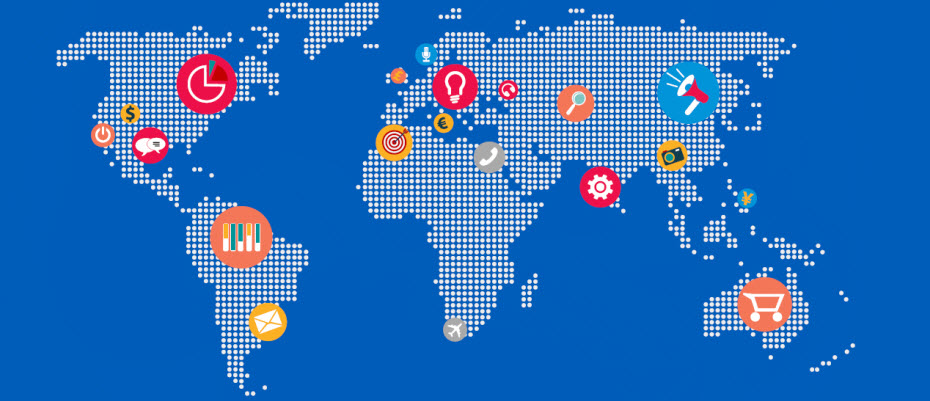Tag: ROI

With the number of consumer visits to bank branches having declined from 52% of people visiting their bank branch on a monthly basis to 32% since 2015, the shift in banking to digital is apparent. Rather than face-to-face interaction, today’s financial consumers value remote, on-demand, services. They expect instant credit decisioning, immediate account funding, and around-the-clock customer assistance. To adapt, financial service providers see the necessity to respond to consumers’ growing expectations and become part of their overall digital lifestyle. Here are a few ways that financial services can adjust to changing consumer behavior: Drive mobile app activity With more than 50% of the world’s population actively using smartphones, the popularity of mobile banking apps has soared. Mobile apps have revolutionized the banking sector by facilitating easier communication between clients and institutions, offering value-added services, and introducing blockchain technologies. Consumers use mobile banking apps to pay bills, transfer funds, deposit checks, and make person-to-person payments. In fact, according to a study by Bank of America, more than 60% of millennials use mobile apps to make person-to-person payments on a regular basis! Financial institutions who launch new, or invest in enhancing existing mobile apps, can lower their overall costs, increase ROI, and maintain customer loyalty. Provide convenience and rewards CGI conducted a survey on emerging financial consumer trends, focusing on bank customers’ top requirements. Results confirmed that 81% of respondents expected to receive some form of an incentive from their primary banks. Today’s financial consumers may reasonably be won over by service offerings. They want rewards, limited fees, and convenience. As an example, Experian’s Text for CreditTM simplifies the credit process by providing customers with instant credit decisioning through their mobile devices. Personalized offers based on customer behavior can help enhance your brand and attract new customers. Stay connected Today’s consumers expect instant service and gratification. Consumers prefer to work with banks who offer accessible and responsive customer service. According to a recent NGDATA consumer banking survey, 41% of banking customers report that poor customer service is the primary reason they would leave their bank. Mintel suggests developing an omnichannel experience aligned with consumer media consumption. Stay connected with consumers through mobile apps, chatbots, social media, and email. Ensure that all interactions are relevant and helpful and immediately alert customers of any institutional issues or changes. The growing digital demands of consumers are influencing how people purchase banking, lending, and credit services. These changes are driving increased urgency for financial service institutions to adopt real-time financial processes that meet demands for convenience and speed. Interested in more best practices? Watch our On-Demand Webinar

For years, organizations have used data to improve operational efficiencies and cost savings. Now they are beginning to use data to optimize or improve nearly every aspect of their organization. When justifying the return on investment for managing data quality, consider these findings from a recent Experian Data Quality survey of U.S. organizations: 23% of customer data is believed to be inaccurate 75% think inaccurate data is undermining their ability to provide an excellent customer experience 79% say it is difficult to predict when and where the next data challenge will arise 77% believe data management is driven by multiple stakeholders in their organization rather than by a single data specialist >>Download: The 2016 global data management benchmark report

With mortgage interest rates at historic lows, the risk of attrition and its impact on ongoing revenue has become a paramount concern for credit unions. By implementing an automated trigger program as part of its member retention efforts, one credit union was able to improve retention rates and grow its portfolio – achieving a return on investment of 788 percent. Find out how implementing a daily triggers program can help you improve retention rates and alert you when members are looking for new credit. Source: Notification Services Case Study.

In a previous blog, we shared ideas for expanding the “gain” to create a successful ROI to adopt new fraud best practices to improve. In this post, we’ll look more closely at the “cost” side of the ROI equation. The cost of the investment- The costs of fraud analytics and tools that support fraud best practices go beyond the fees charged by the solution provider. While the marketplace is aware of these costs, they often aren’t considered by the solution providers. Achieving consensus on an ROI to move forward with new technology requires both parties to account for these costs. A more robust ROI should these areas: • Labor costs- If a tool increases fraud referral rates, those costs must be taken into account. • Integration costs- Many organizations have strict requirements for recovering integration costs. This can place an additional burden on a successful ROI. • Contractual obligations- As customers look to reduce the cost of other tools, they must be mindful of any obligations to use those tools. • Opportunity costs- Organizations do need to account for the potential impact of their fraud best practices on good customers. Barring a true champion/challenger evaluation, a good way to do this is to remain as neutral as possible with respect to the total number of fraud alerts that are generated using new fraud tools compared to the legacy process As you can see, the challenge of creating a compelling ROI can be much more complicated than the basic equation suggests. It is critical in many industries to begin exploring ways to augment the ROI equation. This will ensure that our industries evolve and thrive without becoming complacent or unable to stay on top of dynamic fraud trends.

By definition, “Return on Investment” is simple: (The gain from an investment - The cost of the investment) _______________________________________________ The cost of the investment With such a simple definition, why do companies that develop fraud analytics and their customers have difficulty agreeing to move forward with new fraud models and tools? I believe the answer lies in the definition of the factors that make up the ROI equation: “The gain from an investment”- When it comes to fraud, most vendors and customers want to focus on minimizing fraud losses. But what happens when fraud losses are not large enough to drive change? To adopt new technology it’s necessary for the industry to expand its view of the “gain.” One way to expand the “gain” is to identify other types of savings and opportunities that aren’t currently measured as fraud losses. These include: Cost of other tools - Data returned by fraud tools can be used to resolve Red Flag compliance discrepancies and help fraud analysts manage high-risk accounts. By making better use of this information, downstream costs can be avoided. Other types of “bad” organizations are beginning to look at the similarities among fraud and credit losses. Rather than identifying a fraud trend and searching for a tool to address it, some industry leaders are taking a different approach -- let the fraud tool identify the high-risk accounts, and then see what types of behavior exist in that population. This approach helps organizations create the business case for constant improvement and also helps them validate the way in which they currently categorize losses. To increase cross sell opportunities - Focus on the “good” populations. False positives aren’t just filtered out of the fraud review work flow, they are routed into other work flows where relationships can be expanded.